![]()
![]()
![]()
Use LEFT and RIGHT arrow keys to navigate between flashcards;
Use UP and DOWN arrow keys to flip the card;
H to show hint;
A reads text to speech;
34 Cards in this Set
- Front
- Back
|
Scapula 1. Spine 2. Acromion process 3. Coracoid process 4. Glenoid fossa |
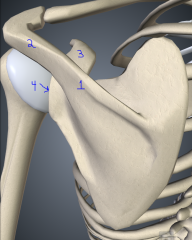
|
|
|
Humerus 1. Head 2. Deltoid tuberosity 3. Olecranon fossa 4. Coronoid fossa 5. Trochlea 6. Capitulum 7. Medial and lateral epicondyles |
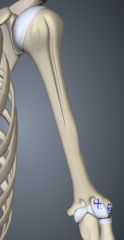
|
|
|
Humerus 1. Head 2. Deltoid tuberosity 3. Olecranon fossa 4. Coronoid fossa 5. Trochlea 6. Capitulum 7. Medial and lateral epicondyles |
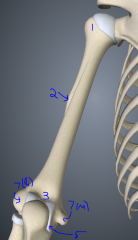
|
|
|
Ulna 1. Olecranon process 2. Coronoid process 3. Trochlear notch 4. Radial notch 5. Styloid process |
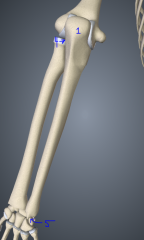
|
|
|
Ulna 1. Olecranon process 2. Coronoid process 3. Trochlear notch 4. Radial notch 5. Styloid process |

|
|
|
Radius 1. Head 2. Styloid process |
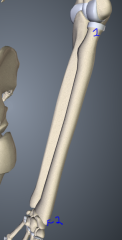
|
|
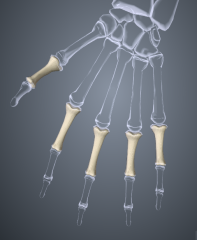
|
Proximal Phalanges |
|
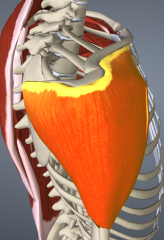
|
Right Deltoid - Origin: clavicle, acromion and spine of scapula - Insertion: deltoid tuberosity of humerus - Action: arm abduction (can aid in flexion, extension, and rotation of humerus) |
|

|
Left Triceps brachii - Origin: glenoid cavity, posterior humerus, and distal radial groove on posterior humerus - Insertion: Olecranon process of ulna - Action: Powerful forearm extensor; antagonist of forearm flexors (brachialis and biceps brachii) |
|
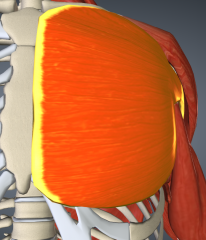
|
Left Pectoralis major - Origin: clavicle, sternum, and (cartilage of) ribs 1-6 - Insertion: Intertubercular sulcus of humerus - Action: Prime mover of arm flexion; adduction, medially rotates arm; pulls chest upward (forced inspiration) |
|
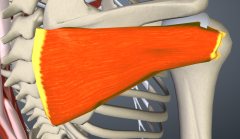
|
Right Infraspinatus - Origin: Infraspinous fossa of scapula - Induction: Greater tubercle of humerus - Action: Lateral rotation of humerus; helps hold head of humerus in the glenoid cavity; stabilizes shoulder |
|
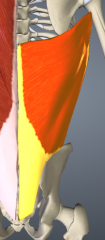
|
Right Latissimus dorsi - Origin: Spinous processes of lower six thoracic vertebrae, lumbar vertebrae, last three to four ribs, and iliac crest - Induction: Intertubercular sulcus of humerus - Action: Prime mover of arm extension; adducts and medially rotates arm; depresses scapula; brings arm down in power stroke |
|
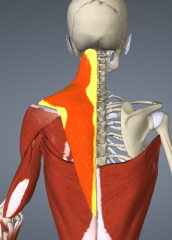
|
Left Trapezius - Origin: occipital bone, spines of C7 and all thoracic vertebrae - Induction: Acromion and spinous process of scapula, lateral third of clavicle - Action: Extends head; raises, rotates, and retracts scapula (shrugging) |
|
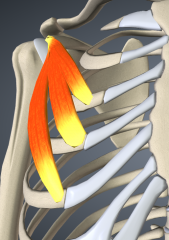
|
Right Pectoralis minor - Origin: Anterior surface of ribs 3-5 (near costal cartilages) - Induction: Coracoid process of scapula - Action: Draws scapula forward and inferiorly (or with scapula fixed, draws chest superiorly) |
|

|
Right Serratus anterior - Origin: Lateral aspect of ribs 1-8 - Induction: Vertebral border of anterior surface of scapula - Action: Move scapula forward towards chest wall; abduction and raising of arm |
|
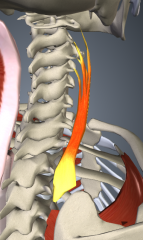
|
Right Levator scapulae - Action: elevates and adducts scapula; flexes neck to the same side |
|
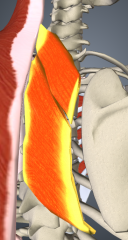
|
Right Major and Minor Rhomboids - Origin: Spinous process of C7 and T1-T5 - Induction: Medial border of scapula - Action: Pulls scapula medially; stabilizes scapula; rotates glenoid cavity downward; |
|

|
Coracobrachialis |
|

|
Teres major |
|

|
Teres minor |
|
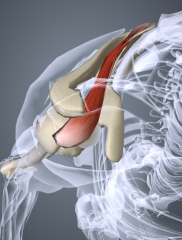
|
Supraspinatus |
|
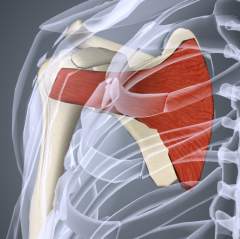
|
Subscapularis |
|
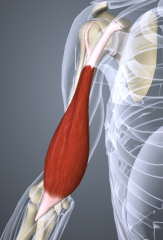
|
Right Biceps brachii - Origin: coracoid process (tendon runs in intertubercular sulcus and capsule of shoulder joint) - Insertion: Radial tuberosity - Action: Flexion of elbow and supination of forearm. "It turns the corkscrew and pulls the cork" |
|
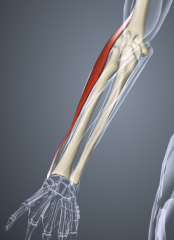
|
Brachioradialis - Origin: Lateral ridge at distal end of humerus - Insertion: Base of styloid process of radius - Action: Synergist in forearm flexion |
|
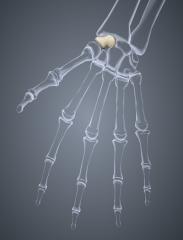
|
Scaphoid bone |
|
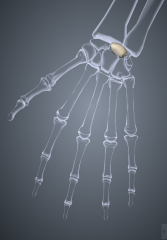
|
Lunate bone |
|
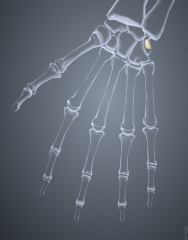
|
Pisiform bone |
|
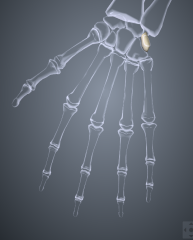
|
Triquetral bone |
|
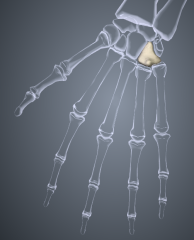
|
Hamate bone |
|

|
Capitate bone |
|
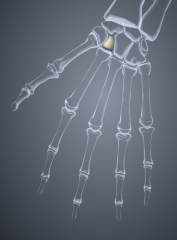
|
Trapezoid bone |
|
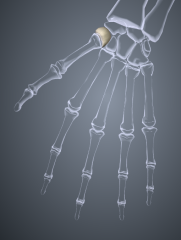
|
Trapezium bone |
|

|
Middle Phalanges |
|
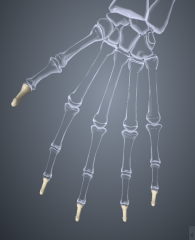
|
Distal Phalanges |

